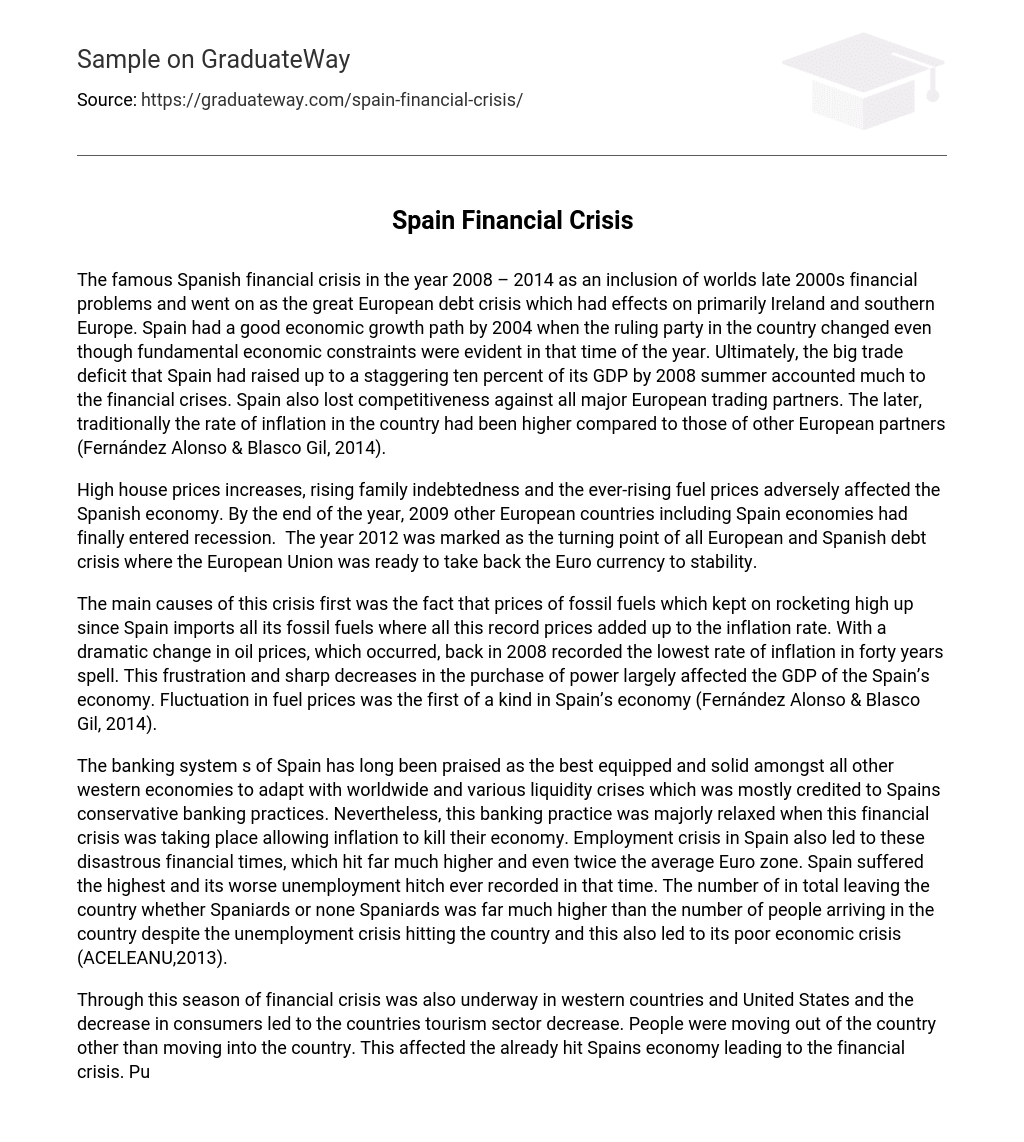The famous Spanish financial crisis in the year 2008 – 2014 as an inclusion of worlds late 2000s financial problems and went on as the great European debt crisis which had effects on primarily Ireland and southern Europe. Spain had a good economic growth path by 2004 when the ruling party in the country changed even though fundamental economic constraints were evident in that time of the year. Ultimately, the big trade deficit that Spain had raised up to a staggering ten percent of its GDP by 2008 summer accounted much to the financial crises. Spain also lost competitiveness against all major European trading partners. The later, traditionally the rate of inflation in the country had been higher compared to those of other European partners (Fernández Alonso & Blasco Gil, 2014).
High house prices increases, rising family indebtedness and the ever-rising fuel prices adversely affected the Spanish economy. By the end of the year, 2009 other European countries including Spain economies had finally entered recession. The year 2012 was marked as the turning point of all European and Spanish debt crisis where the European Union was ready to take back the Euro currency to stability.
The main causes of this crisis first was the fact that prices of fossil fuels which kept on rocketing high up since Spain imports all its fossil fuels where all this record prices added up to the inflation rate. With a dramatic change in oil prices, which occurred, back in 2008 recorded the lowest rate of inflation in forty years spell. This frustration and sharp decreases in the purchase of power largely affected the GDP of the Spain’s economy. Fluctuation in fuel prices was the first of a kind in Spain’s economy (Fernández Alonso & Blasco Gil, 2014).
The banking system s of Spain has long been praised as the best equipped and solid amongst all other western economies to adapt with worldwide and various liquidity crises which was mostly credited to Spains conservative banking practices. Nevertheless, this banking practice was majorly relaxed when this financial crisis was taking place allowing inflation to kill their economy. Employment crisis in Spain also led to these disastrous financial times, which hit far much higher and even twice the average Euro zone. Spain suffered the highest and its worse unemployment hitch ever recorded in that time. The number of in total leaving the country whether Spaniards or none Spaniards was far much higher than the number of people arriving in the country despite the unemployment crisis hitting the country and this also led to its poor economic crisis (ACELEANU,2013).
Through this season of financial crisis was also underway in western countries and United States and the decrease in consumers led to the countries tourism sector decrease. People were moving out of the country other than moving into the country. This affected the already hit Spains economy leading to the financial crisis. Public debt of almost 36.2% of the countries GDP was there even before the financial crisis in Spain. Largely it was due to the extensive ballooning of tax revenue during the house bubble period. Spain responded to this crisis by initiating a programme consisting of primary tax increases. By 2012, an emergency crisis meeting by the Euro group was held to discuss on the way to inject some capital back to the Spanish banks to revive her economy a sum amounting 40,000 million euro (ACELEANU, 2013).
References
Fernández Alonso, I., & Blasco Gil, J. (2014). Press subsidy policies in Spain in the context of financial crisis (2008–2012): An analysis of the Catalan case. European Journal Of Communication, 29(2), 171-187. doi:10.1177/0267323113518288
Aceleanu, M. (2013). The labour market in the post-crisis economy: the case of Spain. Theoretical & Applied Economics, 20(3), 135-146





